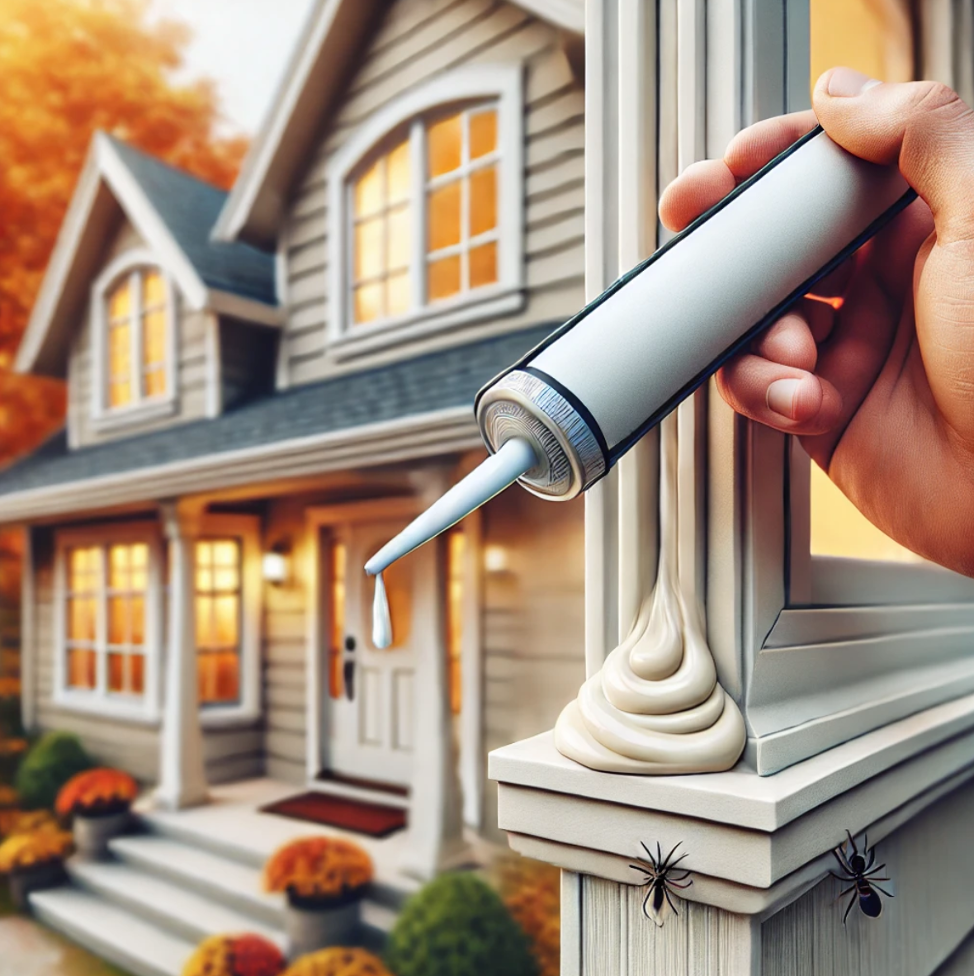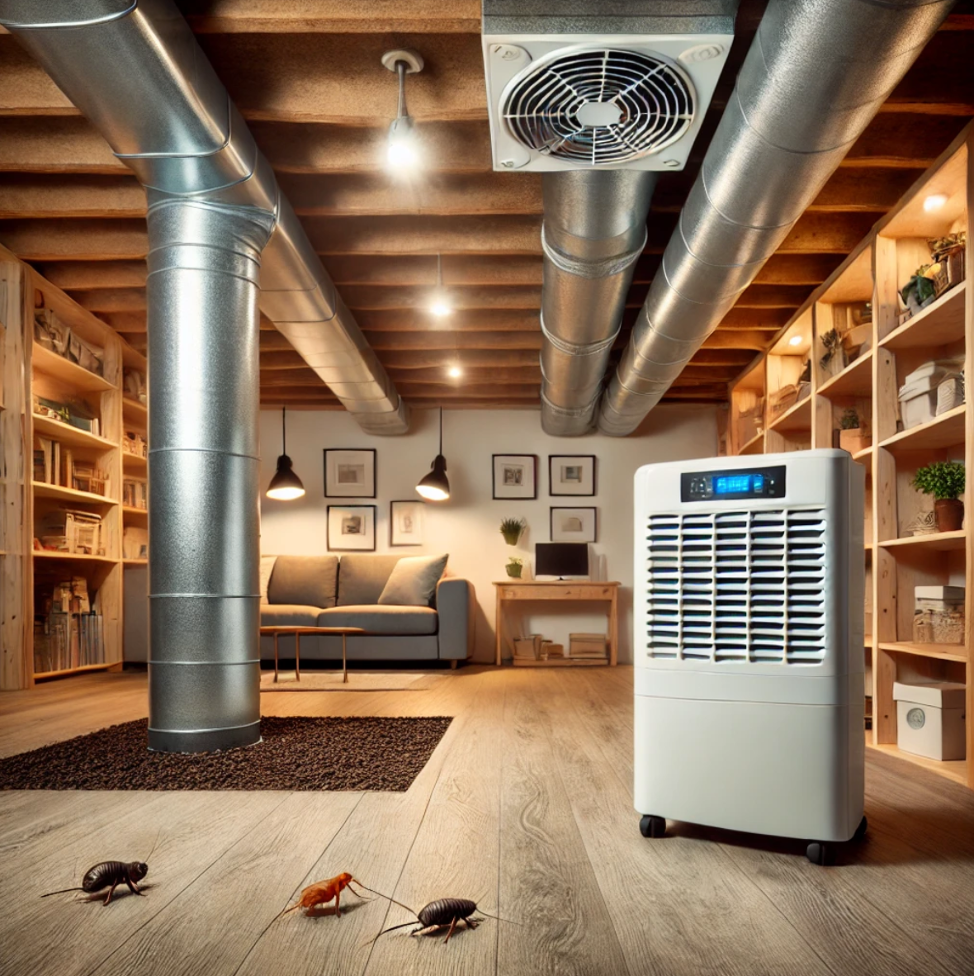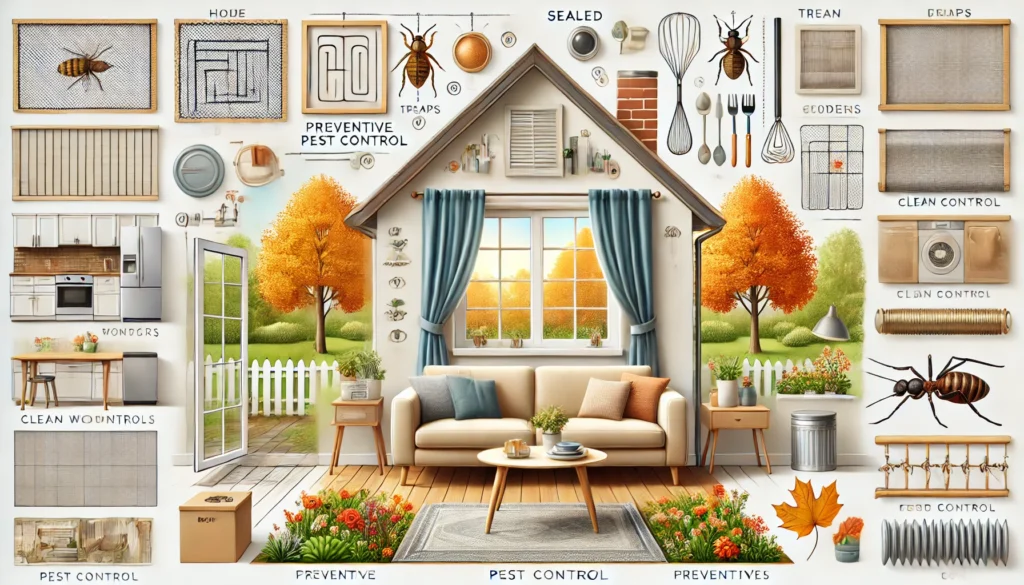As the summer months come to an end and fall approaches, many common household pests start seeking shelter indoors to escape the cooler temperatures. Pests such as rodents, spiders, ants, and cockroaches are particularly active during this transitional season, making it essential to prepare your home before they invade. The good news is that you can take several preventive measures to keep your home pest-free as the weather changes.
In this expert guide, we will explore the best practices for preventing common household pests before fall. By implementing these strategies, you can protect your home, reduce the chances of infestation, and create a safe, comfortable living environment for your family.
1. Seal Entry Points to Keep Pests Out

One of the most effective ways to prevent pests from entering your home is by sealing off potential entry points. Small gaps and cracks around doors, windows, and foundations are common places where pests can sneak in.
How to Do It:
- Inspect your home’s exterior for any cracks or gaps around windows, doors, and vents. Use caulk or weather stripping to seal small openings.
- Install door sweeps under exterior doors to prevent rodents, insects, and other pests from crawling inside.
- Make sure window screens are in good condition and repair or replace any that are torn or damaged.
Best For: Rodents, spiders, ants, and cockroaches.
2. Keep Your Home Clean and Clutter-Free

Pests are often attracted to food crumbs, trash, and clutter, as these provide both nourishment and hiding places. Maintaining a clean and organized home can go a long way in keeping pests at bay.
How to Do It:
- Wipe down countertops, sweep floors, and vacuum regularly to remove food debris and crumbs.
- Store all food in airtight containers and clean up spills immediately to avoid attracting ants, roaches, and rodents.
- Declutter areas such as basements, attics, and garages to remove potential hiding spots for pests like spiders and rodents.
Best For: Ants, cockroaches, rodents, and spiders.
3. Maintain Your Yard and Garden

Pests often use overgrown gardens, tall grass, and cluttered outdoor areas as stepping stones to get into your home. Keeping your yard well-maintained reduces the likelihood of pests nesting close to your house.
How to Do It:
- Trim trees and bushes away from your home’s exterior to prevent pests from using branches as pathways to get inside.
- Keep your lawn mowed and remove leaf piles or mulch that could provide nesting areas for pests.
- Remove standing water from your yard, as mosquitoes and other insects breed in stagnant water.
Best For: Rodents, mosquitoes, ants, and spiders.
4. Use Natural Pest Repellents

Natural pest repellents are a great way to deter pests without using harsh chemicals. Essential oils like peppermint, eucalyptus, and lavender are known for their pest-repellent properties, and they can be used both indoors and outdoors.
How to Do It:
- Mix 10-15 drops of essential oil (peppermint, lavender, or tea tree) with water in a spray bottle. Spray the mixture along doorways, windowsills, and any other potential entry points.
- Use sachets of dried herbs such as lavender or mint in drawers, closets, and corners of your home to repel moths, spiders, and other insects.
Best For: Spiders, ants, moths, and other common insects.
5. Set Up Barriers Around Your Home’s Foundation

Creating physical barriers around the foundation of your home can discourage pests from entering. This is especially effective for ants, termites, and crawling insects.
How to Do It:
- Place a gravel or rock barrier around your home’s foundation to make it difficult for pests to nest or burrow close to the structure.
- Consider using diatomaceous earth or other natural powders around the foundation to prevent insects from crawling into your home.
Best For: Ants, termites, and crawling insects.
6. Store Firewood Away from the Home

If you keep firewood for winter use, make sure it is stored at a distance from your home. Pests such as rodents, spiders, and termites often use firewood piles as shelter and can easily migrate from the woodpile to your house.
How to Do It:
- Store firewood at least 20 feet away from your home and keep it elevated off the ground.
- Cover the firewood to prevent moisture buildup, which can attract termites and other pests.
Best For: Termites, rodents, spiders, and ants.
7. Install Proper Ventilation in Attics and Basements

Poor ventilation can lead to damp, humid conditions that are ideal for pests such as rodents, mold, and cockroaches. Installing proper ventilation in your attic, basement, and crawlspaces can help control moisture and make these areas less attractive to pests.
How to Do It:
- Install attic and basement vents to allow for better airflow and reduce humidity.
- Use a dehumidifier in damp areas to keep moisture levels low, especially in basements and crawlspaces.
Best For: Rodents, cockroaches, and mold.
8. Inspect and Repair Roof and Chimney Damage

Pests like rodents, birds, and bats can use roof damage or open chimneys as entry points to your home. Regular roof and chimney maintenance can prevent these pests from getting inside.
How to Do It:
- Check your roof for missing shingles, loose flashing, or any other damage. Repair any areas where pests could enter.
- Install chimney caps to keep out birds, rodents, and bats.
Best For: Rodents, bats, birds, and insects.
9. Monitor for Signs of Pest Activity

Even with preventive measures, it’s important to stay vigilant and monitor for early signs of pest activity. Catching an infestation early makes it much easier to control.
How to Do It:
- Check for droppings, chewed wires, or gnawed wood, which could indicate the presence of rodents.
- Look for small trails of ants or signs of insect damage on wooden structures.
- Inspect basements, attics, and other less-used areas of your home for signs of pest nesting or activity.
Best For: Rodents, ants, termites, and cockroaches.
10. Hire a Professional Pest Control Service for Regular Inspections
If you live in an area prone to pest infestations, or if you’ve had issues with pests in the past, hiring a professional pest control service can provide peace of mind. Regular inspections can help identify potential issues before they become serious infestations.
How to Do It:
- Schedule biannual or quarterly inspections with a licensed pest control company to ensure your home remains pest-free.
- Ask about eco-friendly pest control options to minimize the use of harmful chemicals.
Best For: All types of pests, including rodents, termites, and insects.
Conclusion
Preventing pests before they have a chance to enter your home is the key to maintaining a clean and comfortable living environment as fall approaches. By sealing entry points, keeping your home clean, maintaining your yard, and using natural pest repellents, you can effectively reduce the risk of a pest invasion. Consistent monitoring and professional inspections will further ensure that your home stays pest-free throughout the season.

